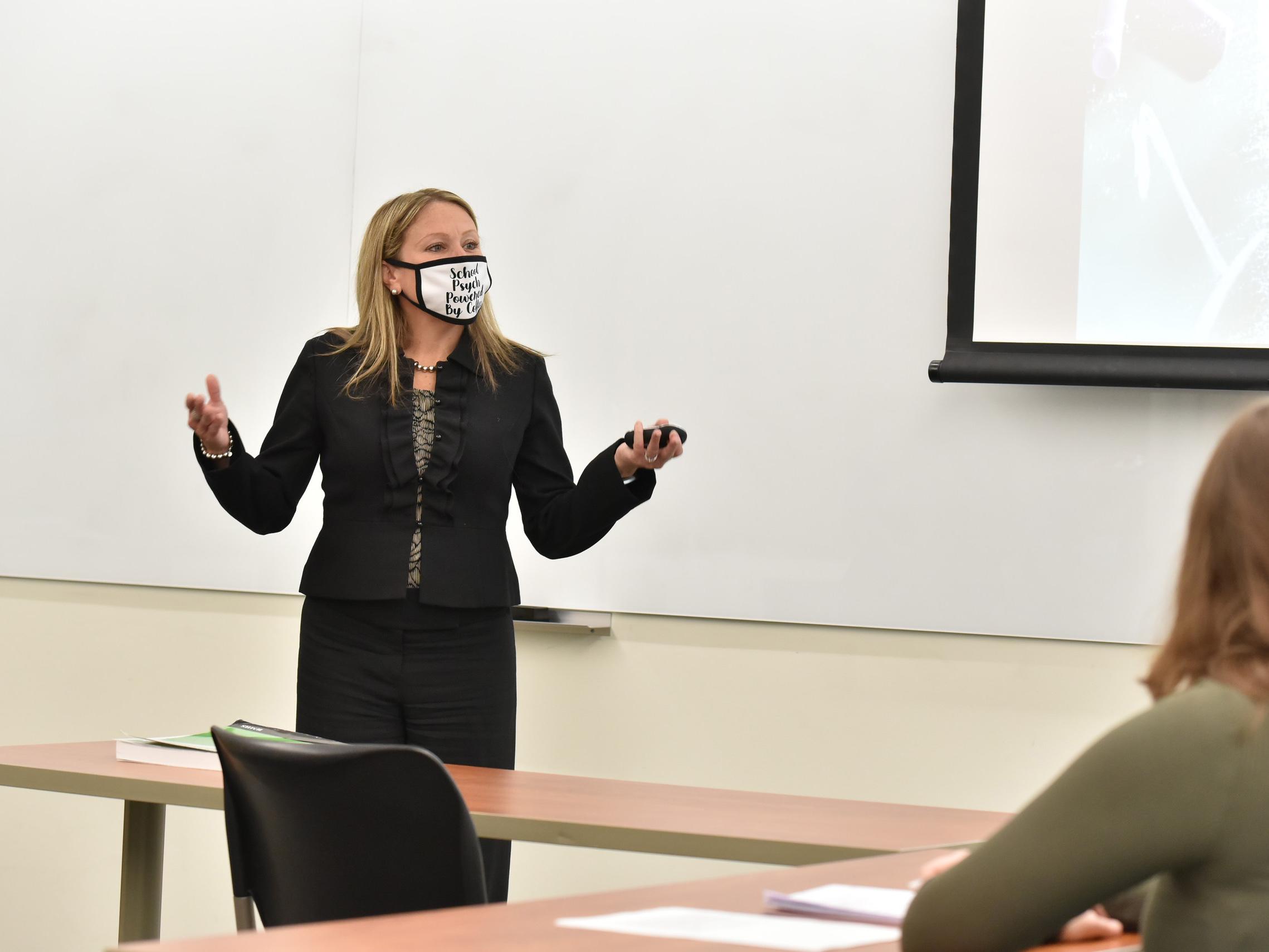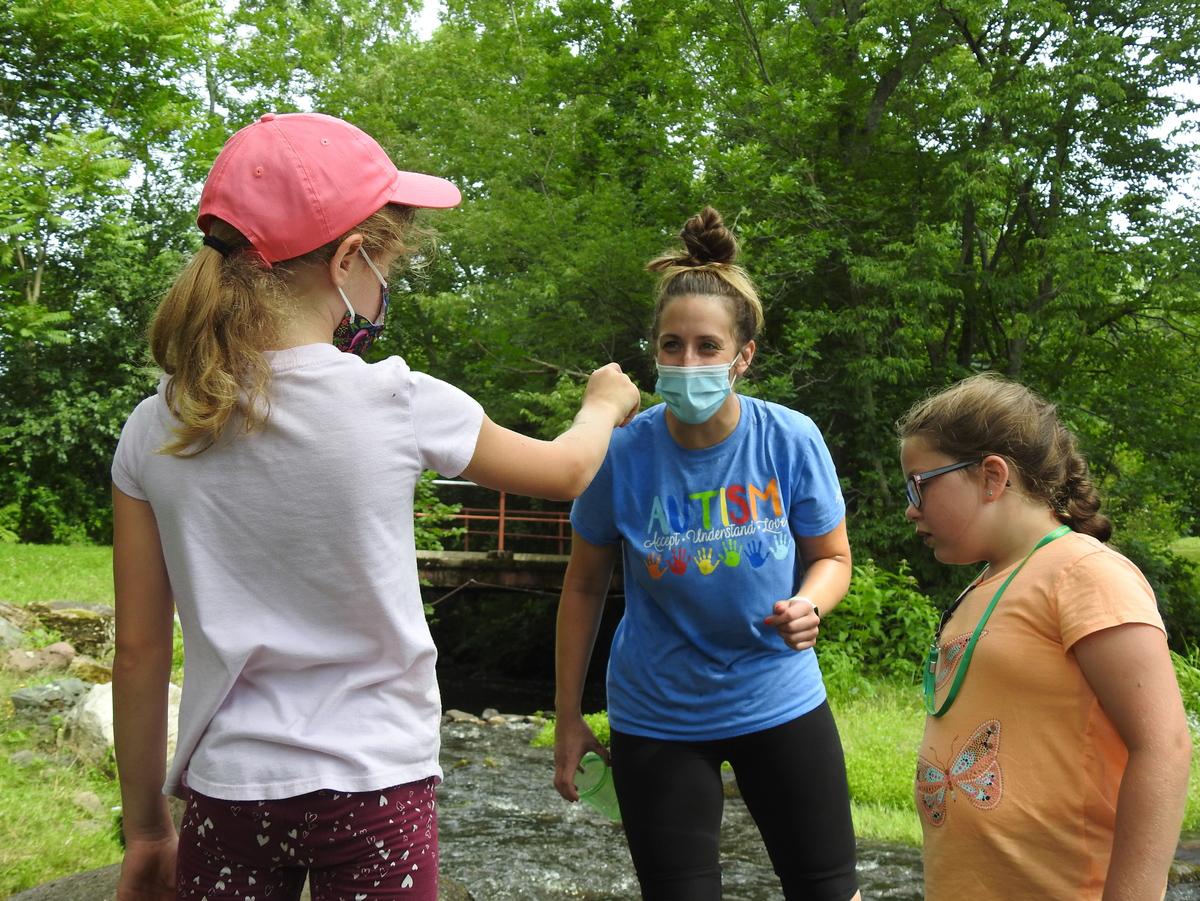Outdoor activities and summer enrichment nature programs -- like SUNY Oswego's Exploring Nature program -- are among the ways to help schoolchildren avoid the "summer slide," counseling and psychological services faculty member Michelle Storie said.
The past two years have offered a variety of challenges for schoolchildren, so helping kids avoid the “summer slide” –- while still enjoying this break time –- is more important than ever, said SUNY Oswego counseling and psychological services faculty member Michelle Storie.
“It is important to establish a balance of providing a mental break from school while also fostering learning opportunities in less formal environments and at home,” said Storie, who is also a state-licensed psychologist and certified school psychologist and coordinates SUNY Oswego's school psychology program.
“The ‘summer slide’ is real, and typically consists of regression in academic skills that can span up to several months,” Storie said. “A study published in the American Education Research Journal in 2020 found that students lost on average 39 percent of gains made across the entire school year.”
And that was before the pandemic, which has added to stress and mental wellness challenges.
“Americans are showing greater amounts of depression and anxiety, according to a recent article published by the American Psychological Association in November 2021,” Storie said. “While it was reported that rates of anxiety and depression were four times higher in 2021 than they were in 2019 among adults, these symptoms are also showing up in children.”
Storie has noticed ways the switch to virtual and/or hybrid learning especially impacted kids, including “seeing an increase in referrals for concerns related to ADHD, particularly among students who struggled with shifts to virtual learning,” Storie noted.
“When school was hybrid or virtual, many parents reported that their children had difficulty sustaining attention to lessons and ignoring home or electronic distractions,” Storie said. “While schools resumed with normal schedules this past fall, many students are still demonstrating gaps in learning that began during the pandemic. Some students also displayed difficulties with organization, yet teachers were accepting of late work during the pandemic and promoted students to the next grade regardless of amount of work completed or demonstrated mastery of skills.”
Younger students, especially first- and second-graders, had their first full school year but “missed out on socialization opportunities and formative years for building school expectations and behavior,” Storie noted. “As a result, we are seeing higher levels of behavioral challenges in schools, with students needing more social-emotional supports. I believe that we are going to see the impact of the pandemic, both academically and social-emotionally, for years to come.”
Summer structure
So while it’s certainly important for students to have this break, providing ways to keep them engaging remains critical.
“One thing that is important for children and adolescents is establishing structure,” Storie suggested. “While students may not need to wake up at 6:30 a.m. every morning, having a regular bedtime and waking time can be important for minimizing sleeping difficulties. Lack of sleep can exacerbate symptoms of anxiety and depression, according to the Anxiety and Depression Association of America.”
Storie recommends children get “screen breaks,” or time when they aren’t on a smartphone, tablet, gaming device, watching TV or engaging in other electronic activities. Families should take advantage of the weather and opportunities summer brings.
“When possible, encourage students to spend time outdoors, as this can also reduce anxiety and depressive symptoms, according to the Life Works Center,” Storie said. “Additionally, having students involved in exercise activities, such as running, jump-roping, jogging or playing sports helps with releasing endorphins and has both mental health and physical benefits.”
Storie added there are plenty of ways to organically build learning into summer break activities that will also help children get more out of their experiences.
“For example, if going on family vacations, read with your child or adolescent about the locales you will be visiting and perhaps the history of the area,” Storie suggested. “Have your children involved in the process of selecting which sites you wish to visit, and perhaps write a pros and cons list for the different locations. Working together, make recipes or crafts, which involve reading, math and listening comprehension, and are fun ways to incorporate academic skills in non-school-like contexts.”
Learning resources
Fun activities that also incorporate learning will help children and adolescents maintain the skills they acquired during the school year while minimizing regression.
“Many libraries offer summer reading programs with incentives for the number of books read,” Storie said. “Additionally, libraries often offer free summer activities involving speakers, readings, crafts and more, which will continue to foster learning and good study habits.”
Storie recommended some additional resources, including:
- For maintaining math development, free online resources that incorporate game elements, such as iXL, Sumdog, Khan Academy and Xtra Math; some parts of these programs are free while some may have costs
- Encouraging students to maintain writing practice by keeping a journal of their summer activities
- Using a free resource like TypeRacer, which lets children and adolescents practice typing skills in a gamelike format
“For varying fees, there are summer learning programs available at the Rosamond Gifford Zoo, Museum of Science and Technology and Children’s Museum of Oswego, which will help to encourage learning and promotion of skills in fun environments outside of the school walls,” Storie said.
Additionally, local colleges and schools offer a variety of educational and social programs –- in the case of SUNY Oswego, this includes the Sheldon Institute enrichment program, Exploring Nature at Rice Creek Field Station and a hands-on STEAM (science, technology, engineering, art and math) Camp.
Storie also suggested finding ways to help transition back to school that will help students feel more comfortable about resuming these routines.
“To help alleviate anxiety about transitioning to the next school year, particularly for anyone entering a new school, it is recommended that parents arrange summer visits with the new school,” Storie said. “Many school employees, including principals, school psychologists and school counselors, work beyond the academic year, and are available if contacted in advance.”
Especially for students transitioning to a new school or environment, working with the school to arrange a specialized tour or meet a future teacher will help calm anxiety and build rapport.
“Students can also have an opportunity to learn the layout of the school and/or possibly get early access to their locker if transitioning to a new building,” Storie said. “This can be especially beneficial for students with anxiety about the start of a new school or who may have difficulty transitioning from the summer back-to-school mode.”

Counseling and psychological services faculty member Michelle Storie said that it's important to keep students engaged and learning over the summer, while still allowing them to have fun.




